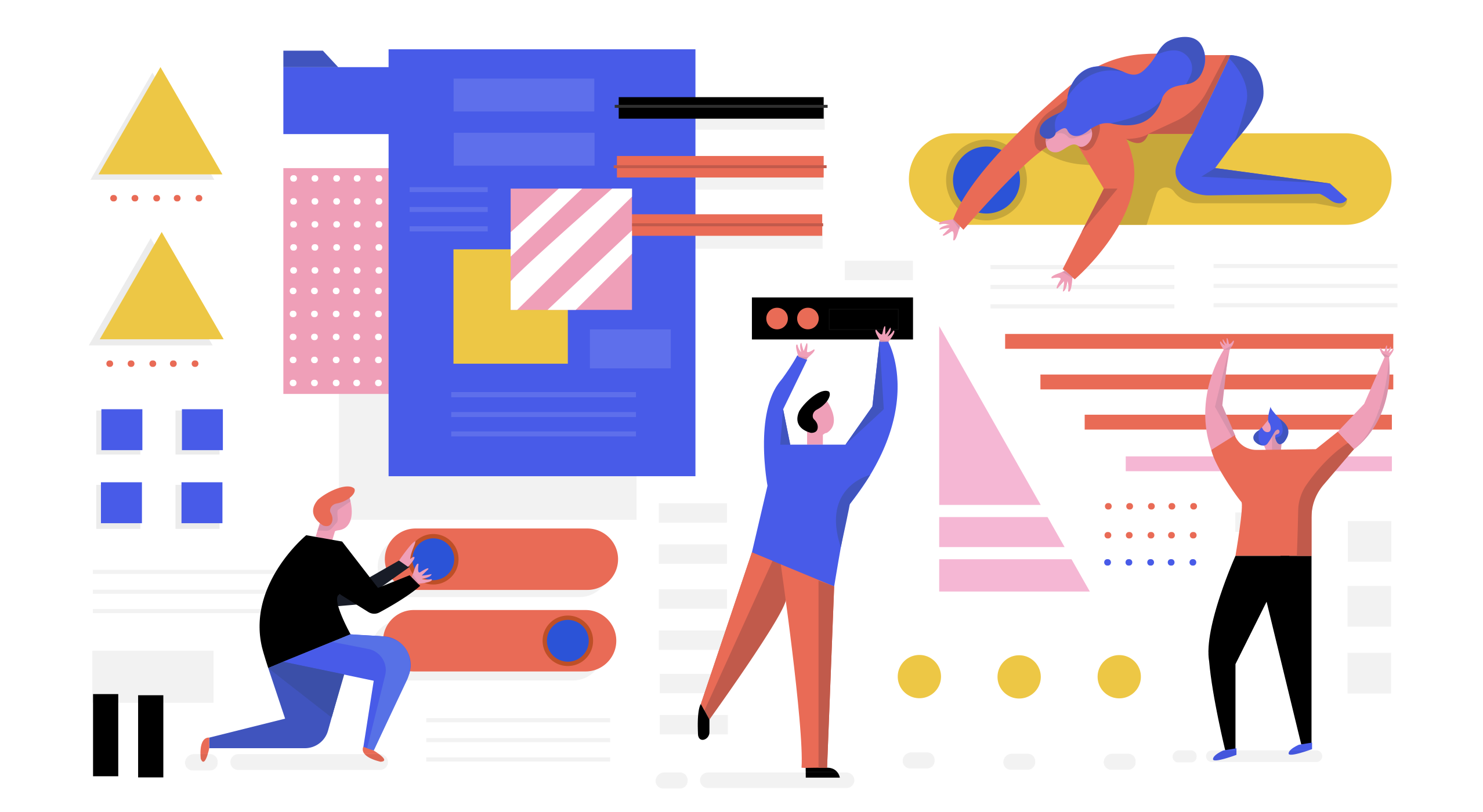How to create user experience strategy

UX Strategy: The Whys and Hows
In a nutshell, user experience (UX) strategy is a holistic approach to customer relations. It defines your company plan for reaching its end users and the proper communication with them. But doesn’t this definition seem too narrow?
The truth is, UX strategy is an entirely abstract term. It stands for the image brand builds to satisfy users. From the brand name, catchphrase and corporate identity to the brand voice, customer relationship strategy and event management. User impression of a brand is a result of the company’s UX strategy, whether successful or failed.
Vital Importance of the UX Strategy
Now that we’ve covered the user experience strategy concept, let’s figure out why exactly it is worth our attention.

We believe the answer is obvious. Having seen hundreds of hours of Coca-Cola ad campaigns, you trust the brand name more. And besides, we are dead sure you’ve tried it before for the same reason.
And it’s not only about the advertisement: it’s about customer emotions driven by brand interaction. Company merchandise, association with the winter holidays and pleasant memories – seems familiar, doesn’t it? This is a great yet subtle game of market domination. And your loyalty is their primary objective.
With that being said, UX strategy should not be underestimated. It’s an integral part of the proper business model.
What Is the User Strategy For?
As we’ve concluded, user experience strategy is crucial for getting on well with your customers. It creates the face of your company, forms its voice and character, establishes the development direction your brand sticks to.
We can hardly call a business without UX strategy a company or even a brand. Managing user experience strategy, you obtain control over your project or company. You set its course on the path towards healthy user relations. And good user experience is what we all strive for in the first place.
How to Create User Experience Strategy: Step-by-Step Guide
One thing is to understand the huge impact of UX on the business. Quite another is to figure out how to build a UX strategy and keep up with the market of your scope. Let’s discover the most crucial strategy stages and their specifics in UX agency‘s practice.
1. Research Stage
You need data to identify your dos and don’ts. This is where the research tools come in handy. Here are the ones worth mentioning:

- Landing page. It’s a website prototype displaying the most essential information about your product. Place a feedback form and offer a reward for email subscription (discount or some gift). You will be surprised how many people would love to help you grow in exchange for a bonus;
- MVP. A minimum viable product has become one of the most popular research tools for the software development world. Creating a basic version of your end product, you give your users – both current and potential – the chance to test it out. MVP is proved to bring enormous feedback when built properly;
- Market study. Learning from your own experience is sometimes too expensive. Why not use your rival’s? Seek out similar products and analyze your competitors’ relations with customers. Find out how users react to their strategies and take notes.
You’ll gain a substantial amount of the target data using these tools. Don’t underestimate the responsibility you take at this stage. This is when you decide which direction to stick to. This is when you understand how to build relationships with users.
Keep in mind that further pivoting will cost you a lot of time and money. Thus, make sure to think twice before you make any significant decision at this phase.
2. Outline Stage

UI/UX technology stack is merged for a reason. No user interface will be sufficient without quality UX design. People responsible for UI/UX of the product must have a clear understanding of ergonomic and suitable interface solutions for different platforms. A desktop application, for instance, becomes unusable when launched on the mobile and vice versa.
Taking this into account, decide which platforms you are going to cover and start wireframing a separate app version for each one of them. Moreover, you will definitely cut the desktop functionality on Android and iOS. It drastically changes the user journey mapping, which is one more reason to wireframe app versions separately.
One more thing to remember is not to rush the UX design process during the outline stage. You will have to fix all the bugs at the subsequent phases, but it will cost you double. It’s a much bigger problem after the product is put together and ready.
3. Testing Stage
You have a first complete version of your product, now it’s time to test it. Take a look at the testing steps you should follow:
| Target Group | Description | |
|---|---|---|
| Alpha Test | Company developers and a few directly invited people | This earliest testing stage grants the access to the company staff and allows a few direct invites to the test. It’s efficient for verifying the core functionality. |
| Closed Beta Test | Supertesters | Main features work fine, let’s test the whole system. Closed beta is accessible to supertesters – a group of people specially selected for this task. |
| Open Beta Test | Everyone willing | If supertesters didn’t find any flaws, it’s time to open the gates for all users. Countless visitors will detect all the remaining disadvantages and refine your product. |
These steps are the conventional approach to software testing. However, your testing cycle may vary. Depending on your scope and project size, you can skip the Alpha of closed Beta testing to reduce the time consumption.
It’s crucial to note that you need to use several data collectors to achieve a full picture of the current project state. You can combine feedback forms with activity loggers to get as much user data as possible.
Register every step customers make in your software UI to find behavioral patterns. You will benefit from it a lot when it comes to optimizing the UX design of yours.
4. Evaluation Stage

Firstly, look for the most successful product components. Put all the figures together and find out why these pages or modules satisfy users the best. Usually, there is a pattern showing why exactly customers prefer some specific components over the others.
Secondly, pay attention to the “unpopular” segments of your project. Compare user activity here with the successful parts and try to identify which features users don’t like about it. Using information about the top-rated components, do your best to optimize the failing ones.
One of the integral parts of user feedback is negative comments. Some people will be frustrated with specific parts of your product, and it’s totally OK. Beginners can perceive the negative feedback as universal truth and give up on their ideas. This is when we need to say: don’t!
Keep in mind that any feedback is helpful. The users are happy about your work? That’s great. Customers express hatred oversome part of your product? Awesome, now you know where there is room for improvement.
5. Revision and Release Stage
User complaints and suggestions are noted, what is next? Let’s bring some positive changes to life.
Although the revision stage may seem too simple to discuss, there are several key points you should bear in mind. Most importantly, structurize the feedback. It will make no sense to implement each and every suggestion one by one. That would just confuse you, as different customers have different opinions.
Group similar tickets and sort them by relevance. The more users report an issue or offer an improvement, more crucial this point actually is. Focus on the most burning problems to save your time. Remember: you can’t please everyone, but you can satisfy the majority.
Note that testing and revision stages may have several iterations, as users find new bugs with every release. Fortunately, it most probably won’t affect the customers, because bug fixes and other changes are often insignificant. Users feel the improvement but are not confused with new versions. A better part of visitors can’t even tell what exactly changed.
What Is Next?

If you’ve gone this far, you sure have some results in brand loyalty and recognition increase. It means you wouldn’t like to lose them, right? This is why product updates are a must.
The best practice is to keep up with the modern trends of your scope. Follow web standards if you are developing a website or seek for mobile UI innovations if you are building an Android or iOS app.
The Bottom Line
Consider UX strategy as your tool for making users happier. Don’t narrow its scope to design solutions. You need to create a holistic experience for your customers. When you take care of your users, they definitely feel and appreciate it.
Whether you are staying consistent or pivoting, think of user satisfaction as your primary objective. It helps to focus on what matters and set your priorities.


